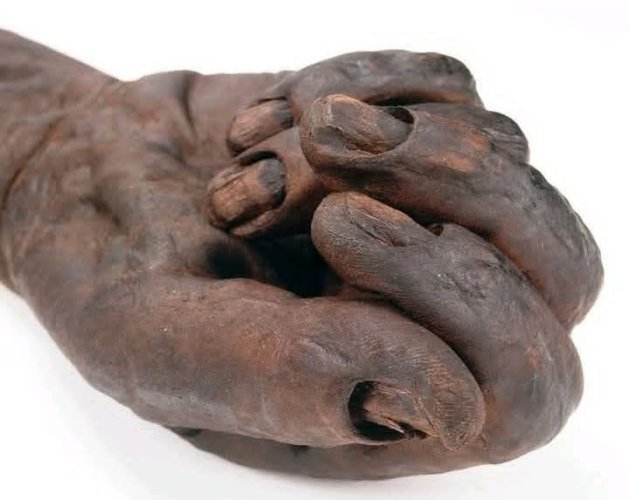
The Remarkable Preservation of Old Croghan Man
Imagine gazing upon a hand so well-preserved that the fingerprints of someone who lived over two thousand years ago remain visible. This is the hand of Old Croghan Man, an Iron Age individual whose remains were unearthed in an Irish bog in June 2003. Named after Croghan Hill in County Offaly, near the discovery site, his remains provide an extraordinary window into ancient Ireland.
Radiocarbon dating places his life between 362 and 175 BC, a time when Celtic culture flourished, and Ireland was divided into roughly 150 kingdoms, each ruled by its own sovereign.
Standing at an estimated 6 feet 6 inches tall, Old Croghan Man was exceptionally tall for his era. His well-manicured nails and the absence of signs of manual labor suggest he held a position of high status, possibly even that of a king or chieftain.
The circumstances of his death are both fascinating and gruesome. He met a violent end—stabbed in the chest, decapitated, and his body severed in half. Deep incisions beneath his nipples have led researchers to theorize that he may have been a failed king or a contender for kingship who was ritually sacrificed. In ancient Irish society, sucking a king’s nipples symbolized submission; their mutilation may have signified his rejection from power.
The location of his burial adds to the mystery. His remains were found in a bog at the base of an ancient hill associated with kingship ceremonies, suggesting the site held great ritual significance. This supports theories that such bogs, often marking tribal boundaries, were considered sacred spaces where offerings were made to the gods to secure prosperity and favorable harvests.
Today, Old Croghan Man’s remains are displayed at the National Museum of Ireland in Dublin. Visitors can marvel at the astonishing preservation of his hand, offering a rare and tangible connection to the distant past—one that sheds light on the rituals, social hierarchy, and beliefs of Iron Age Ireland.
